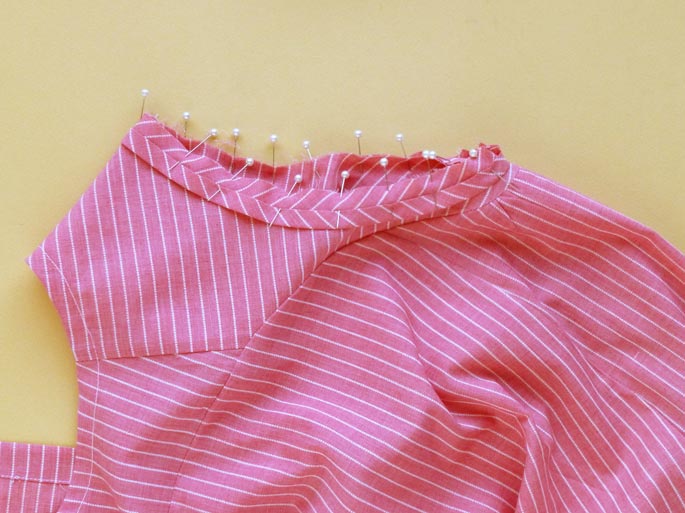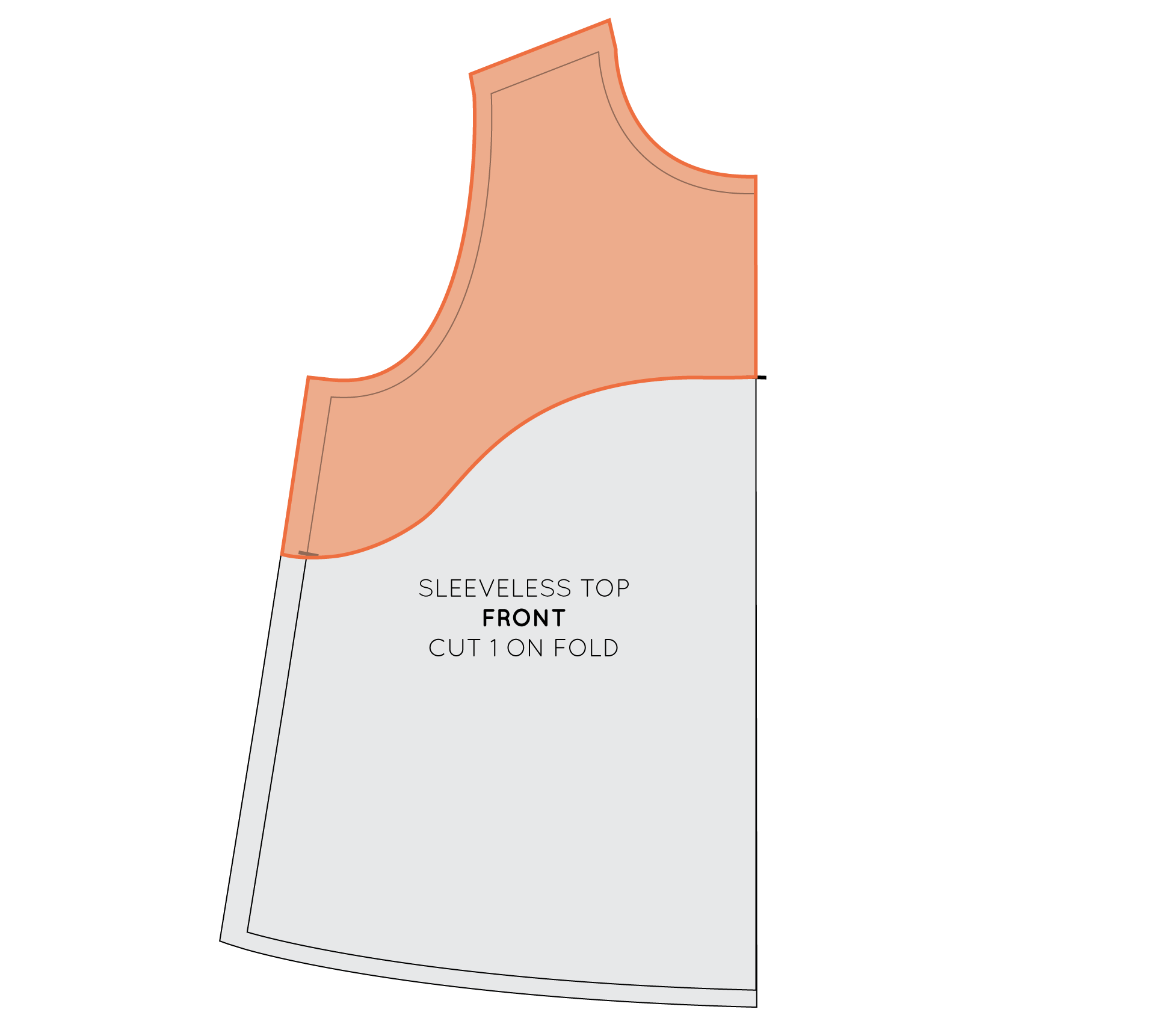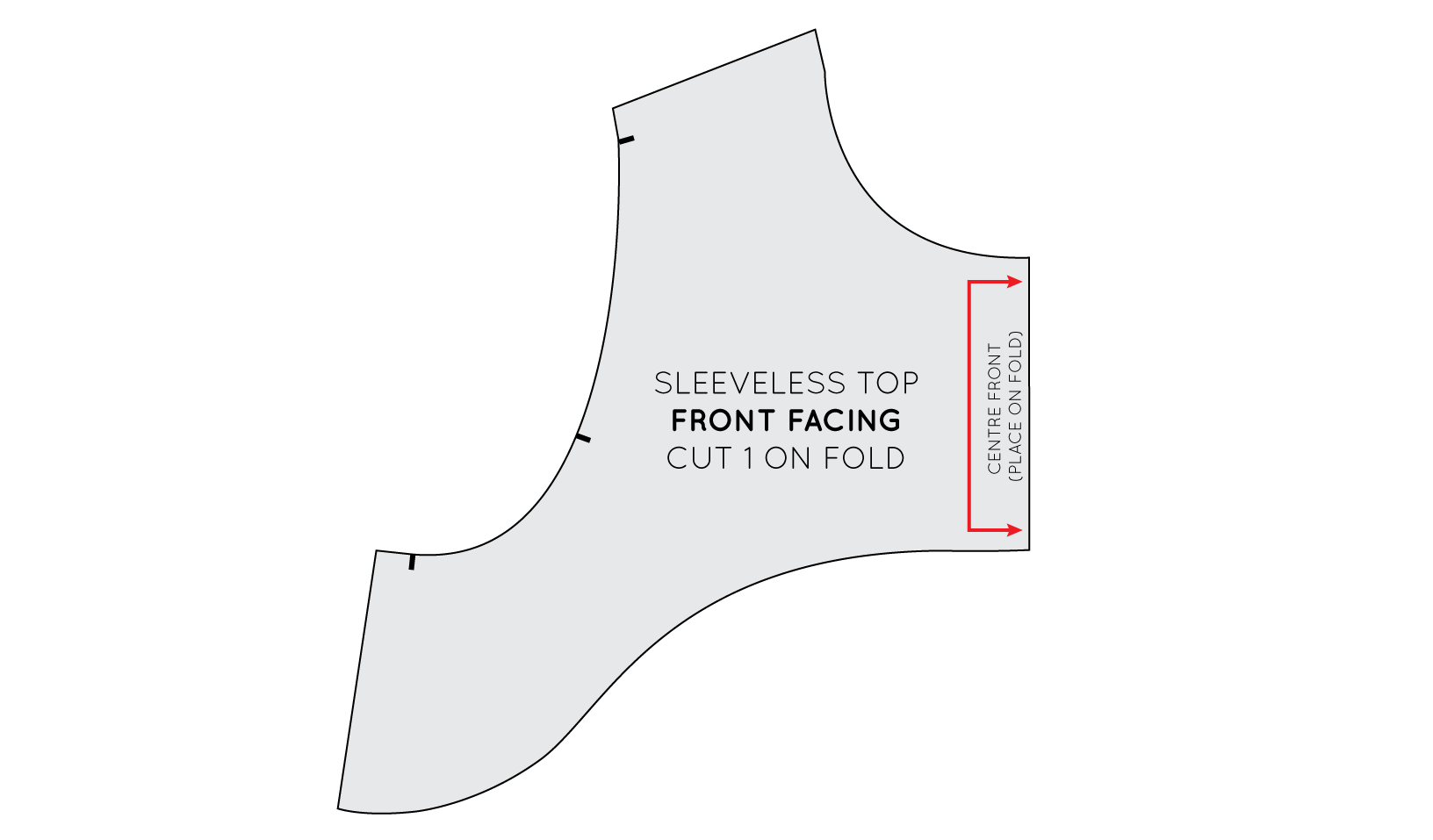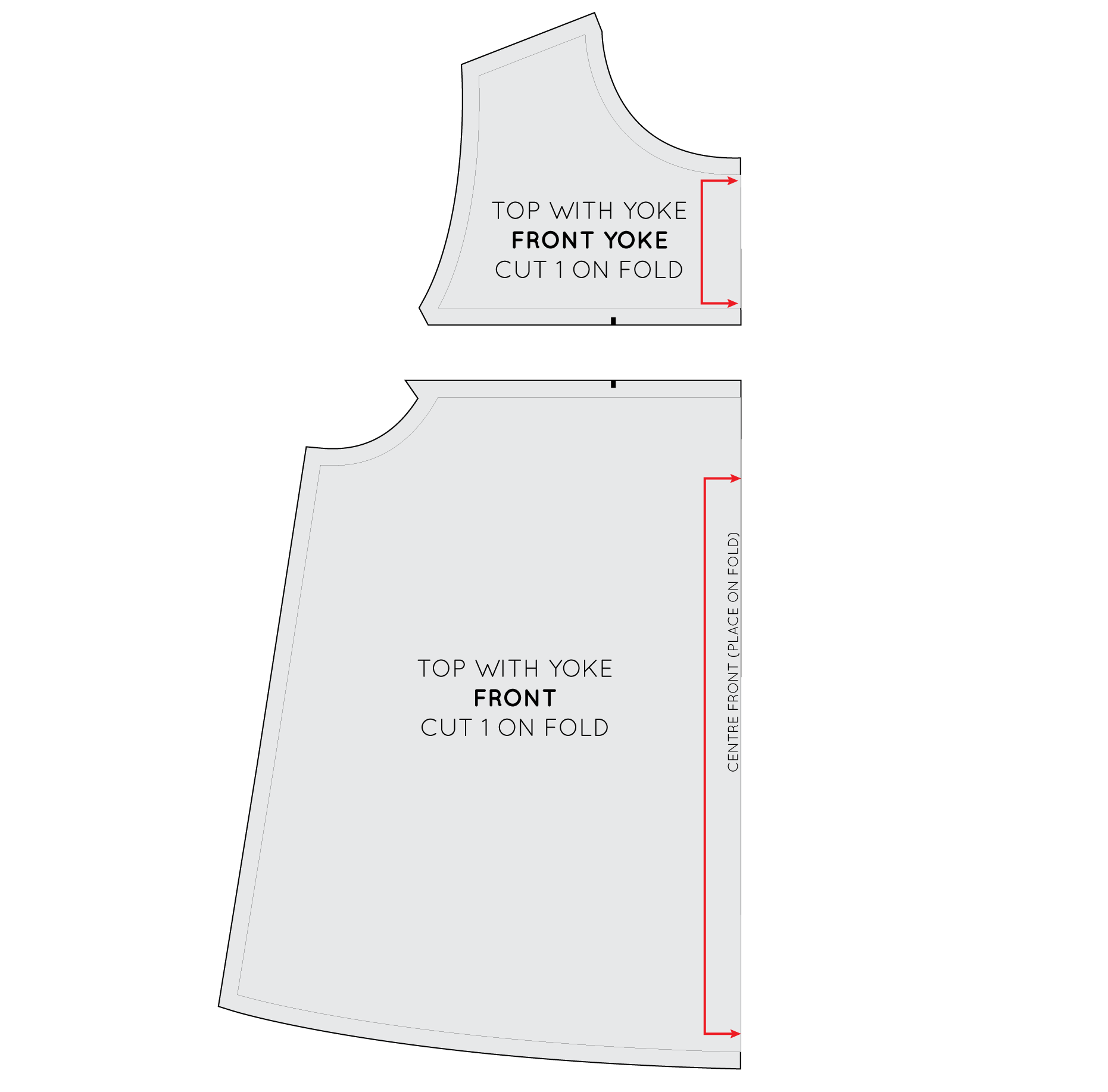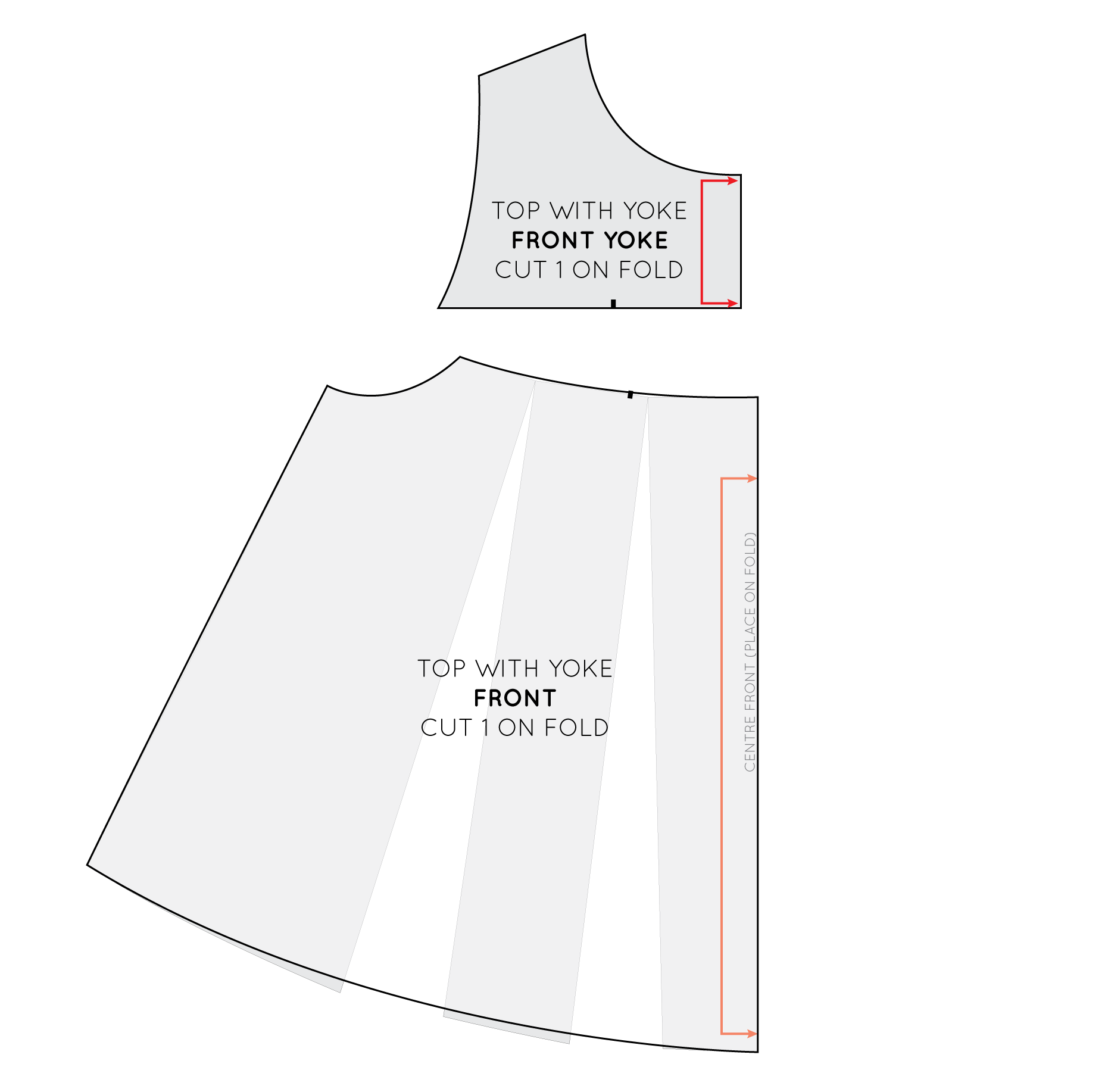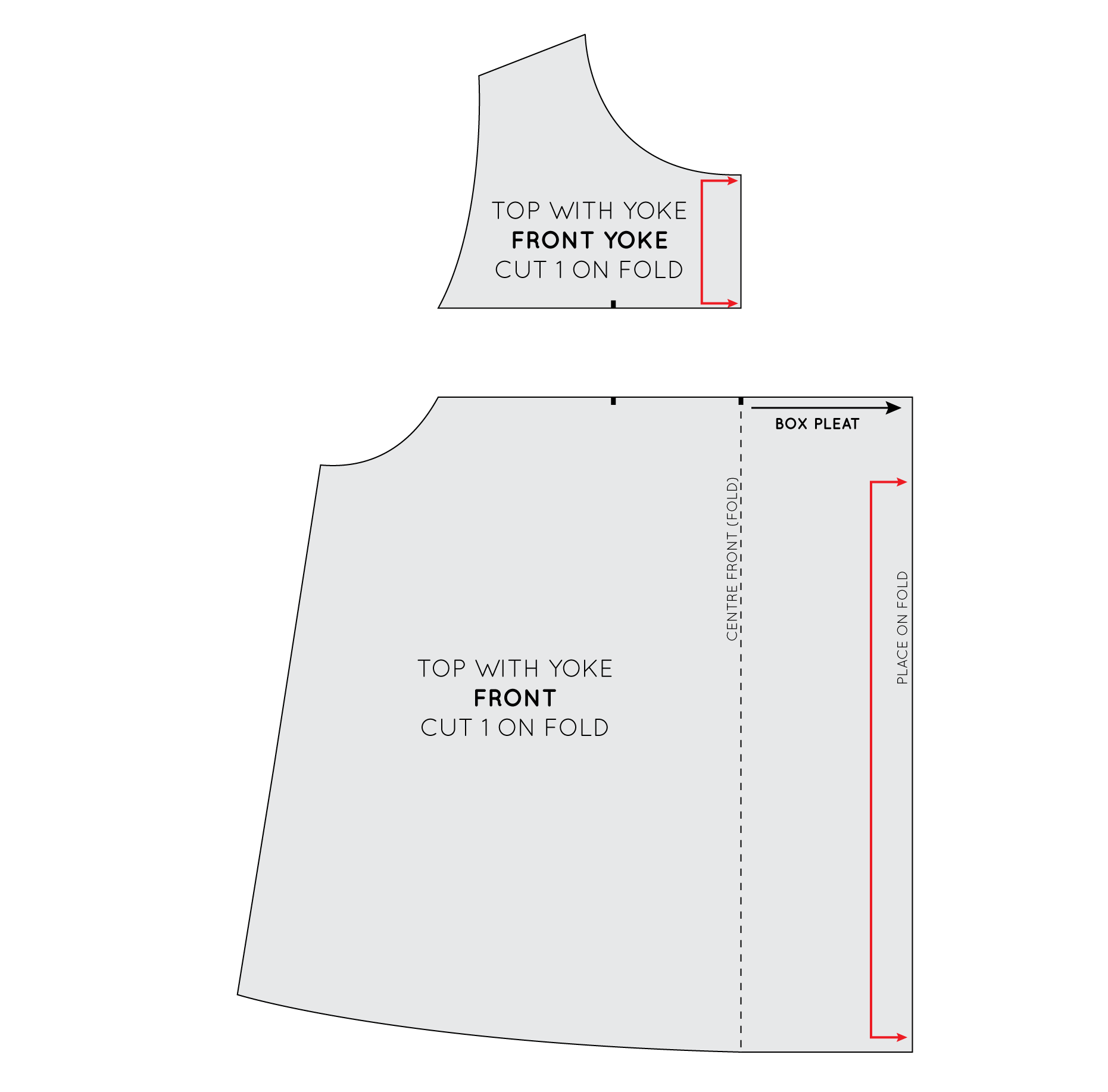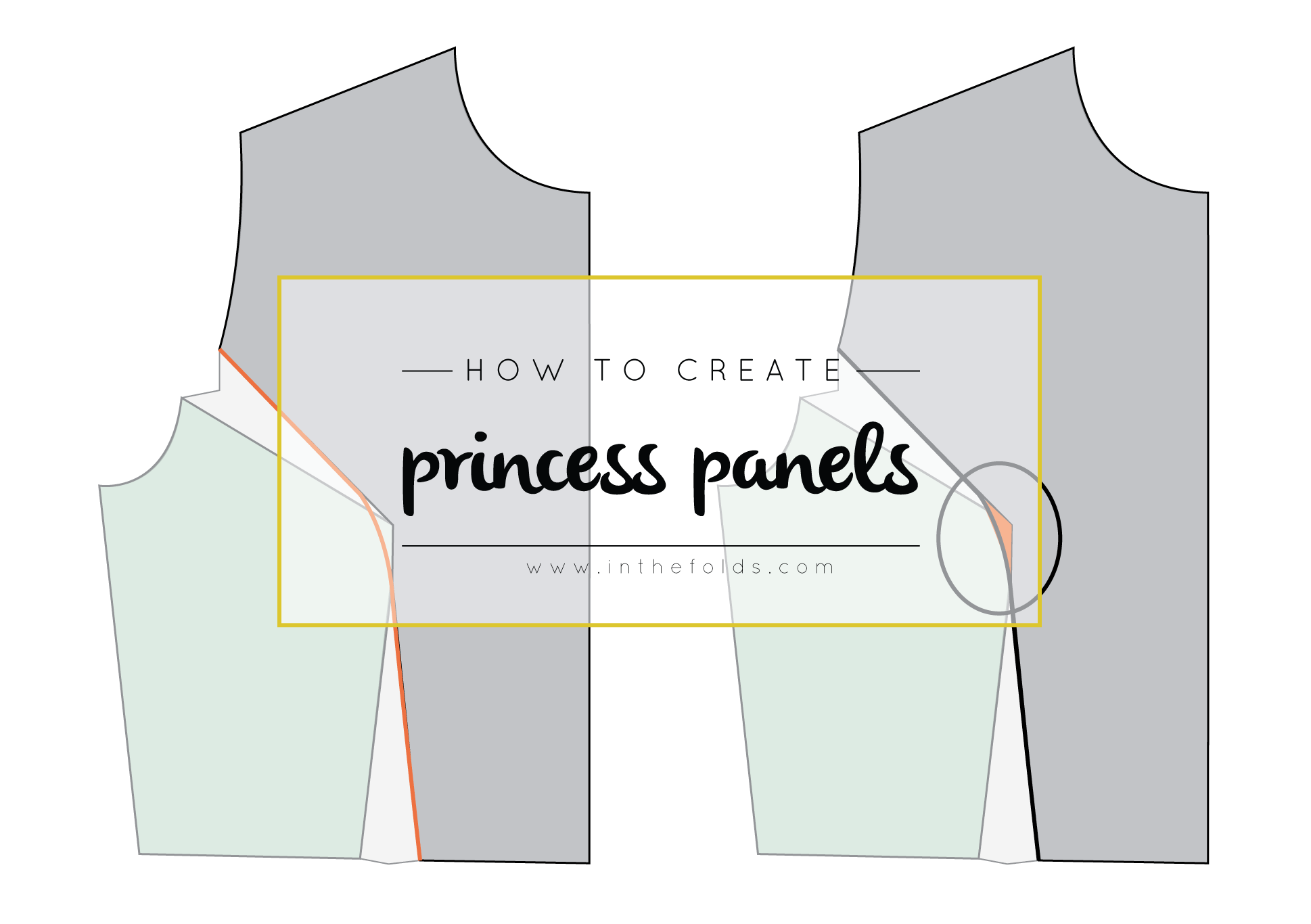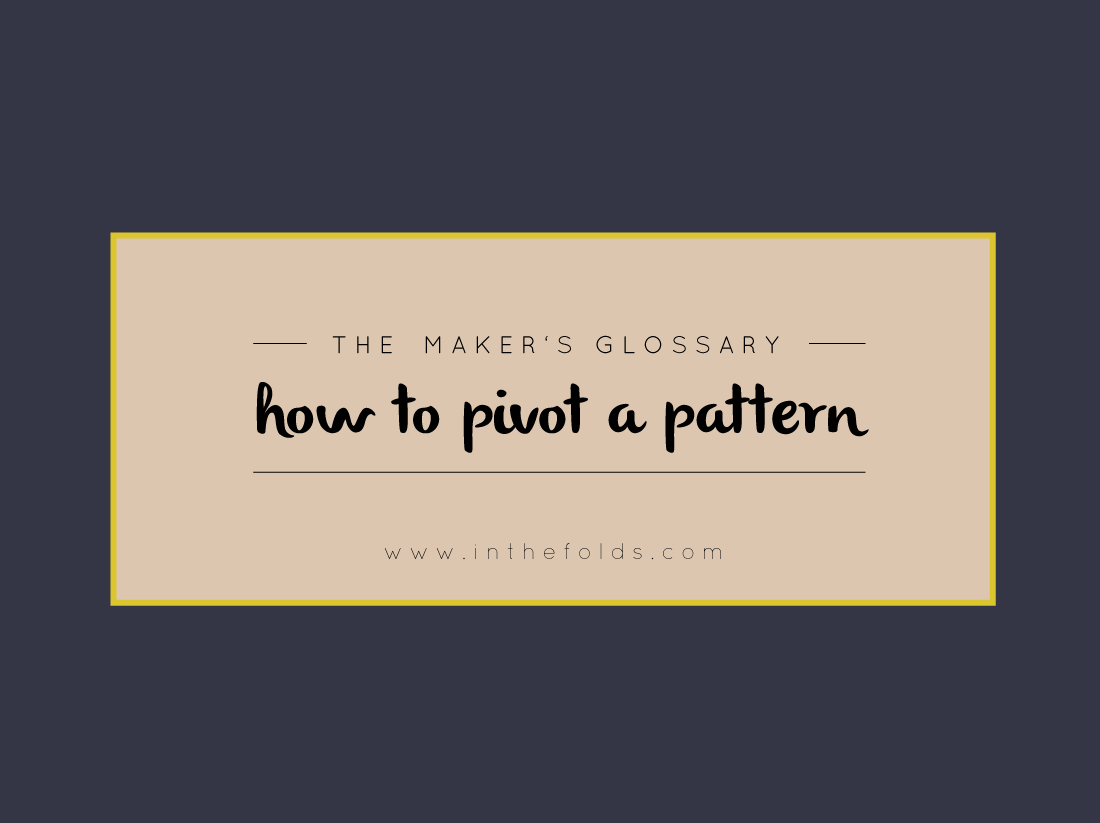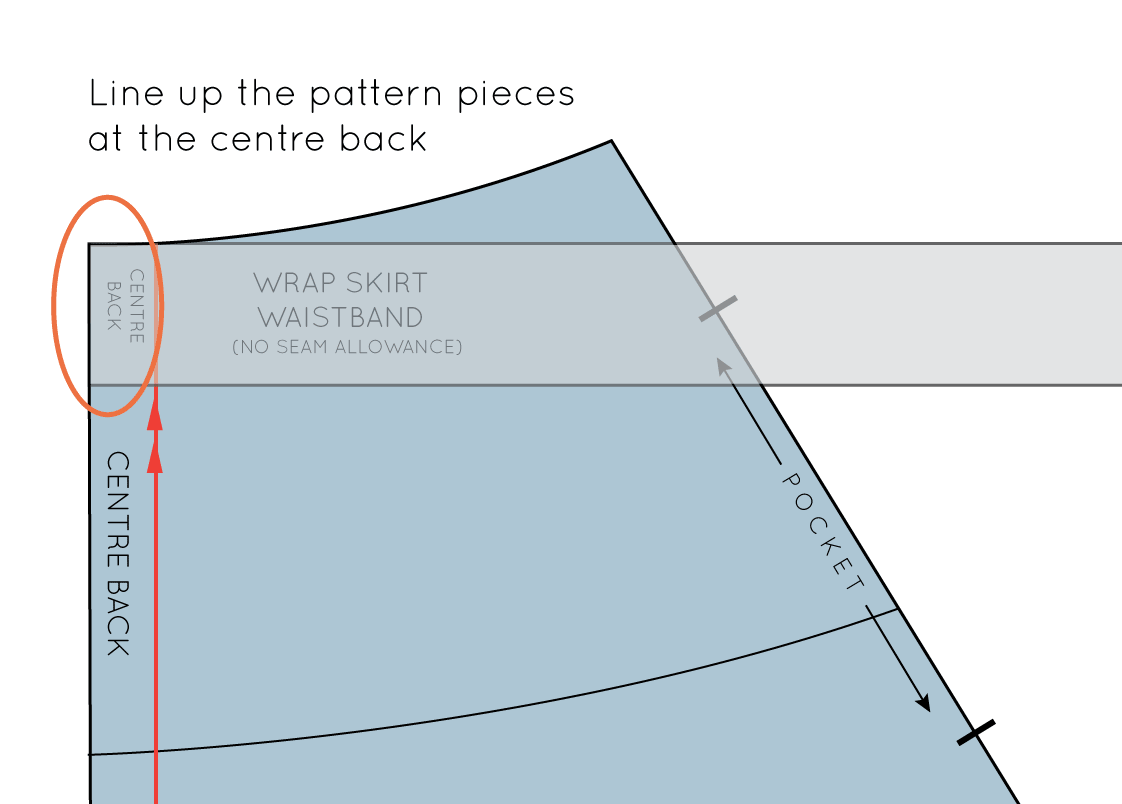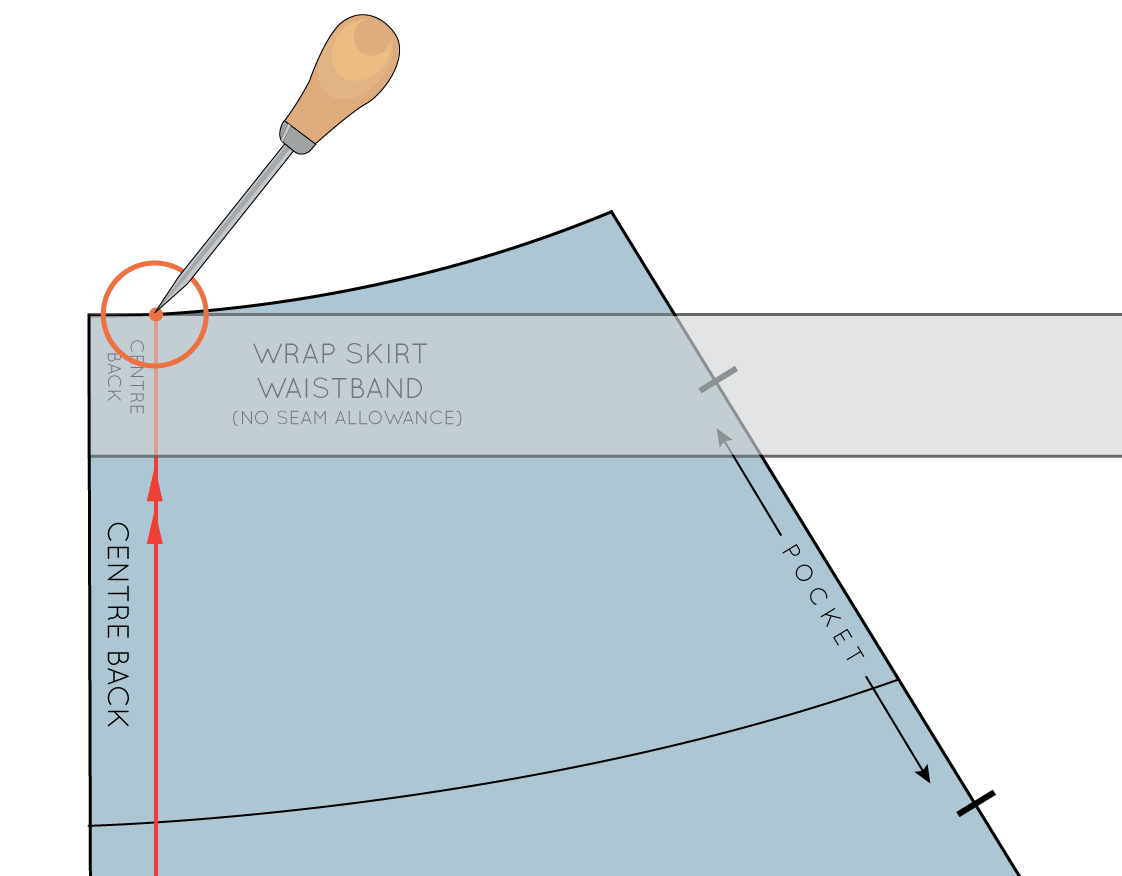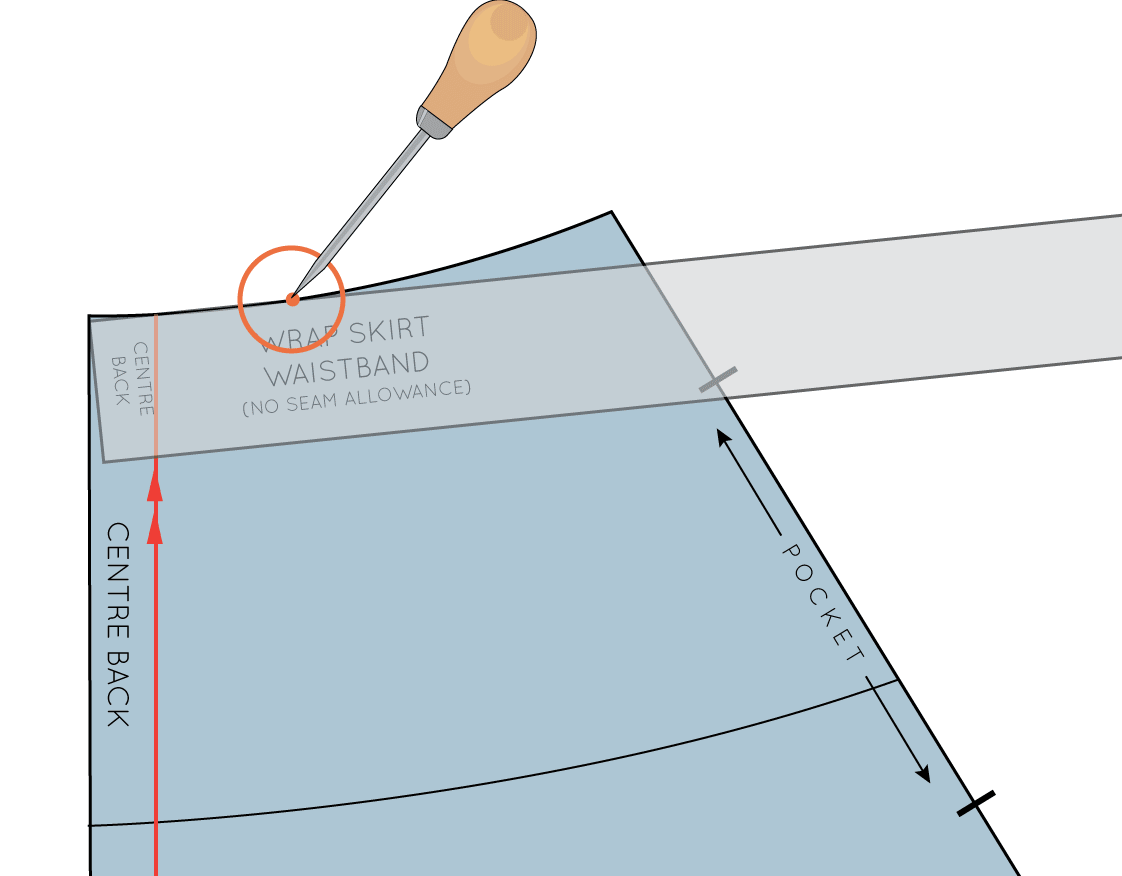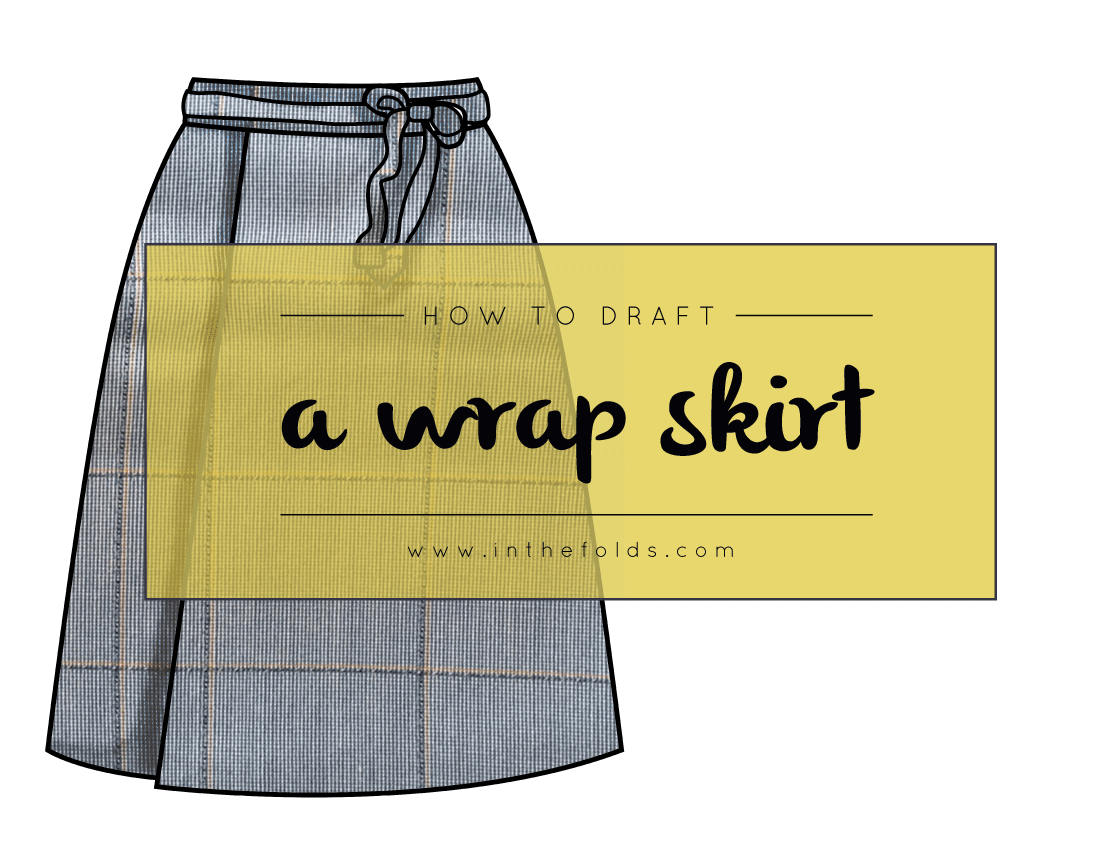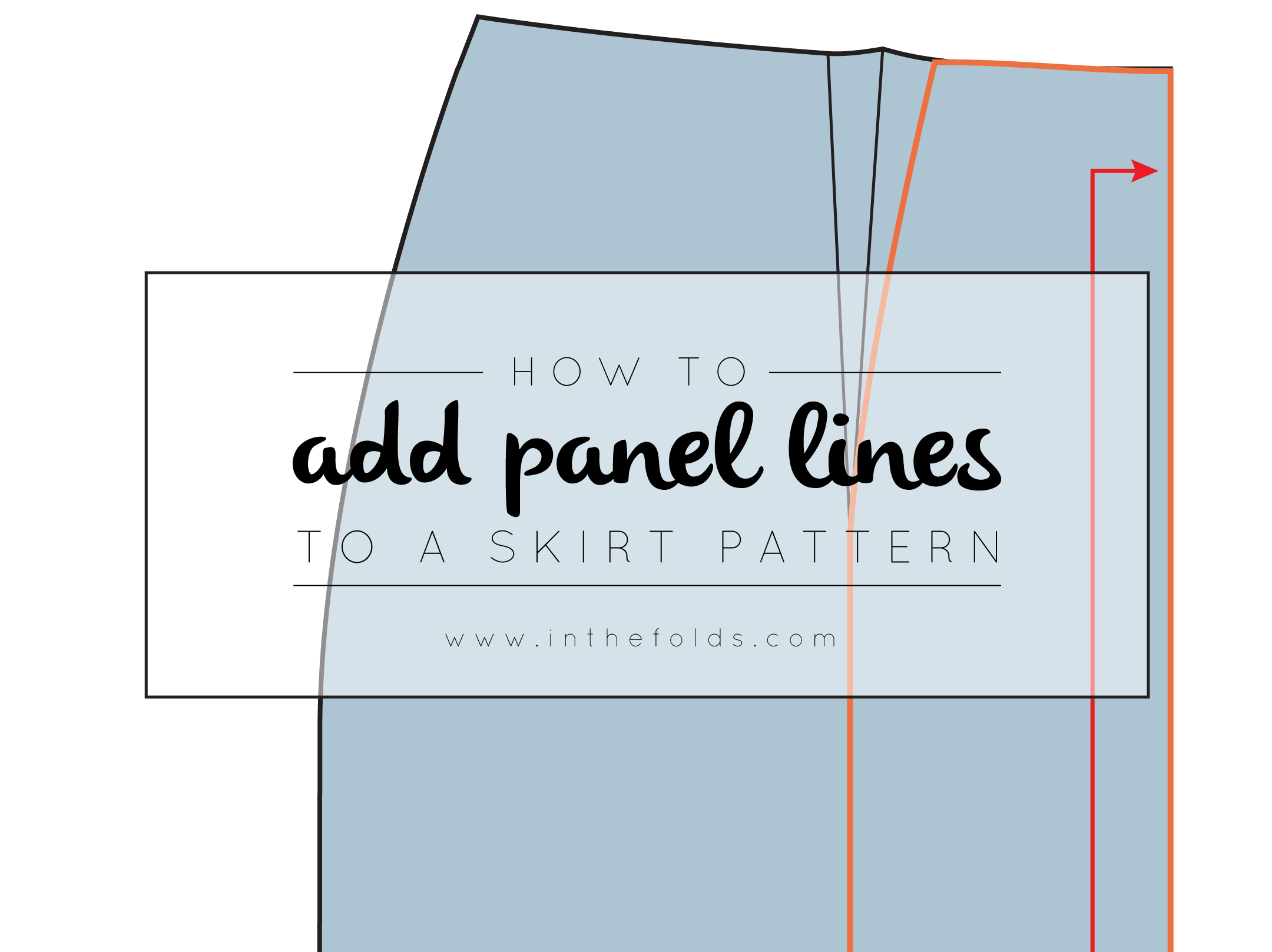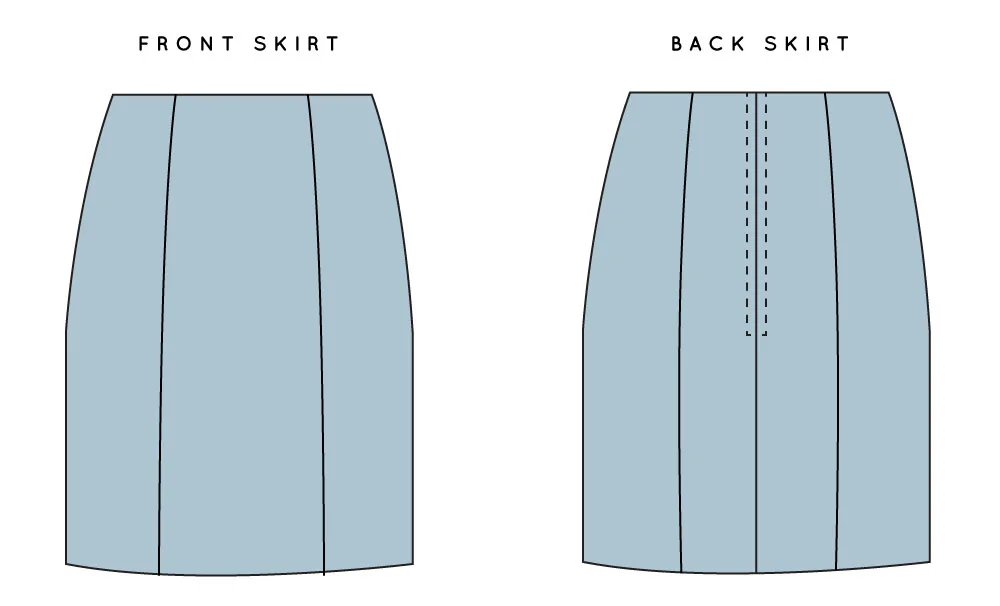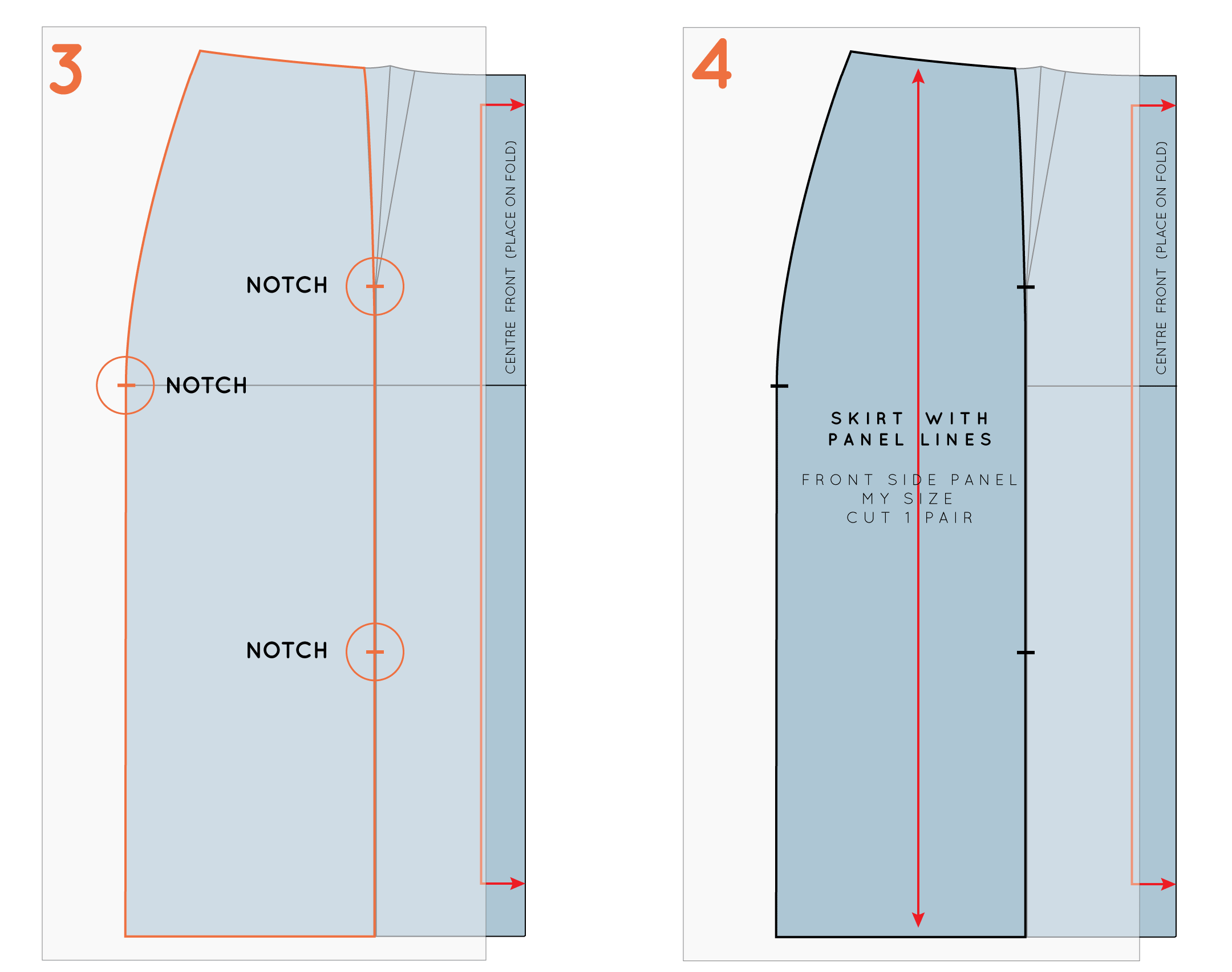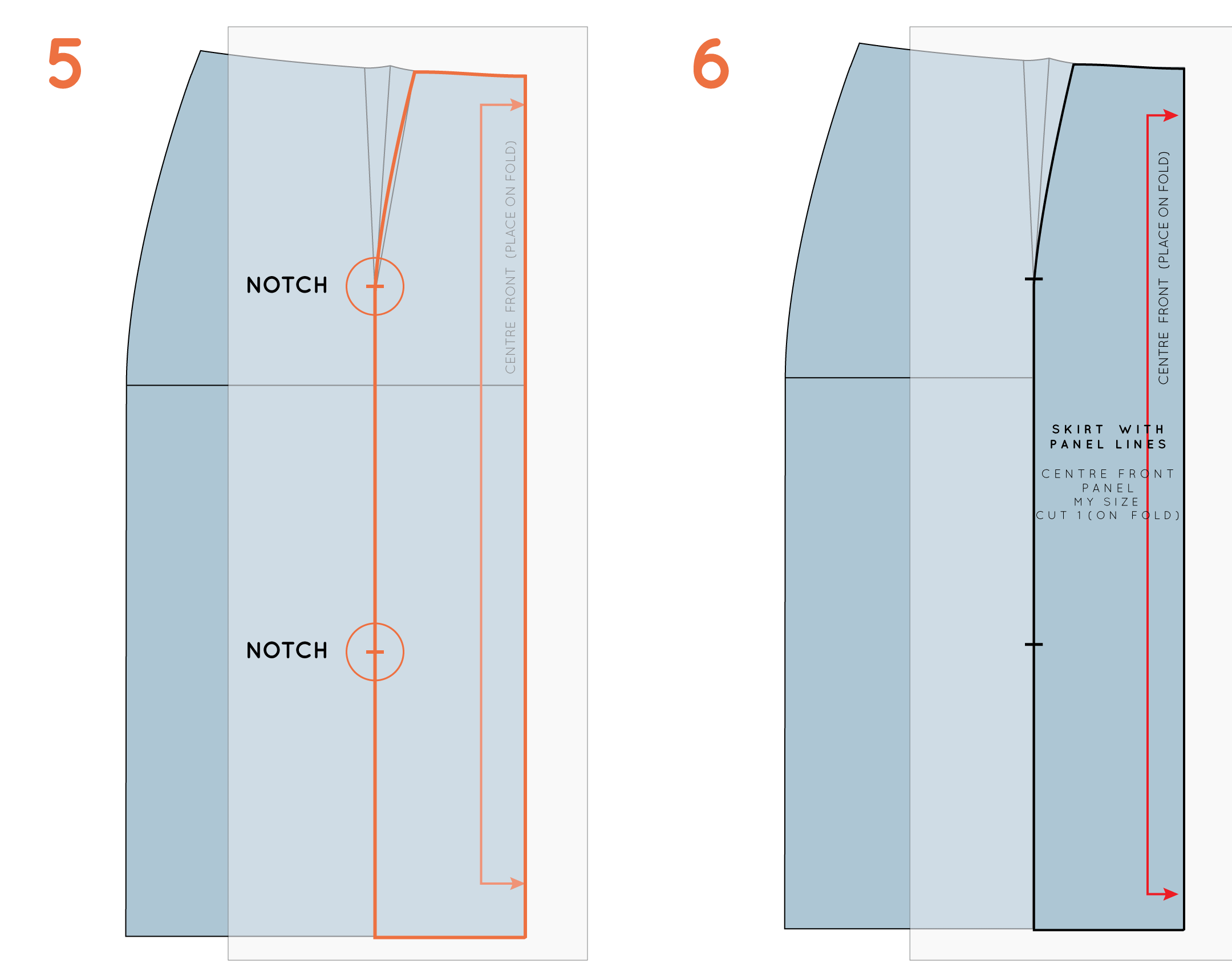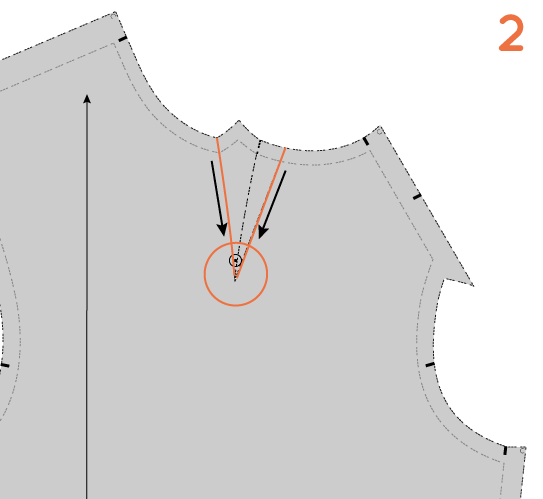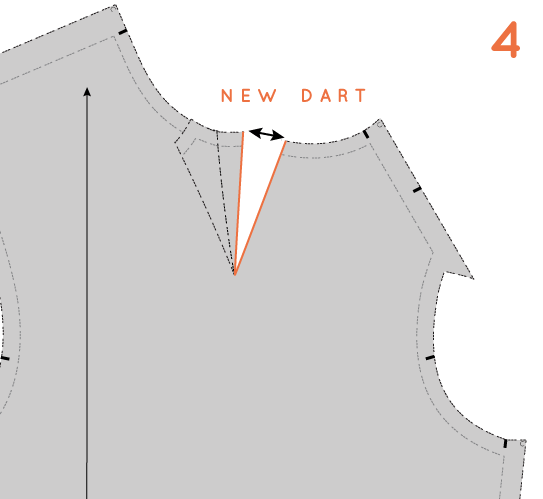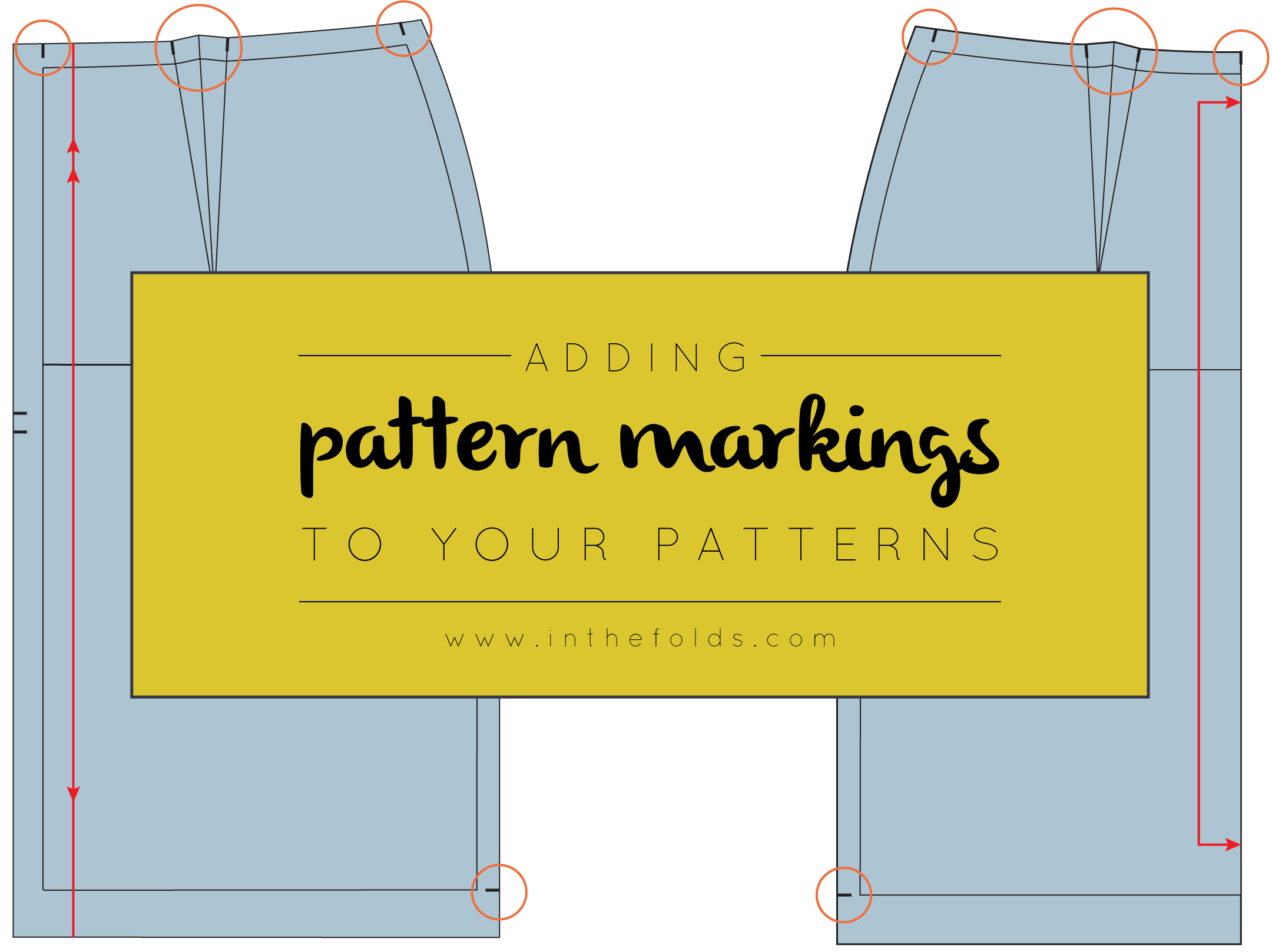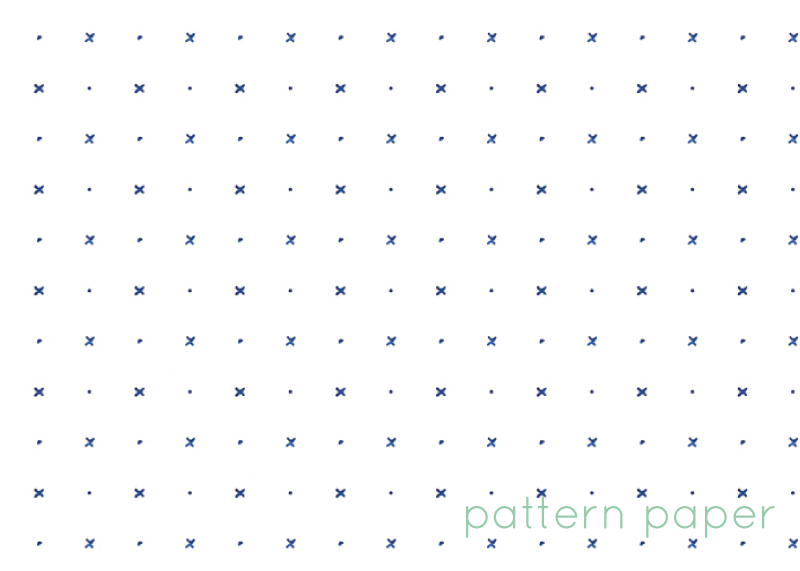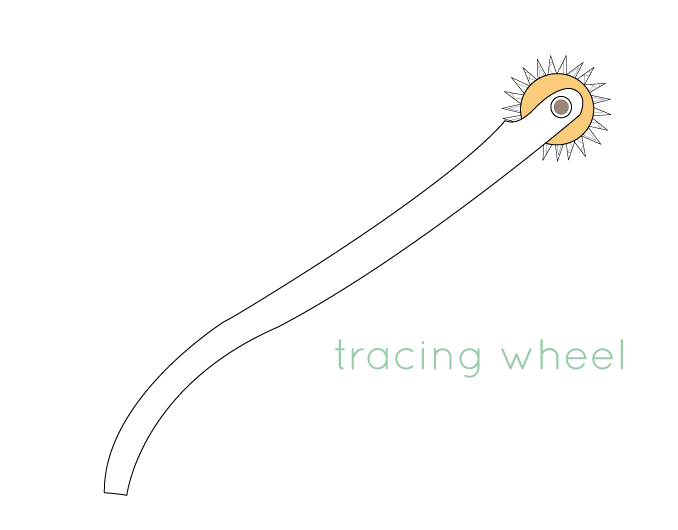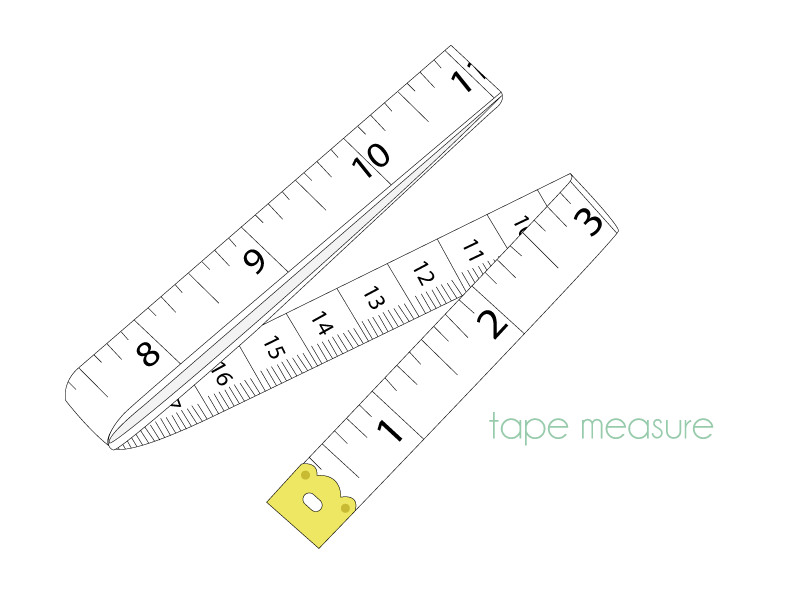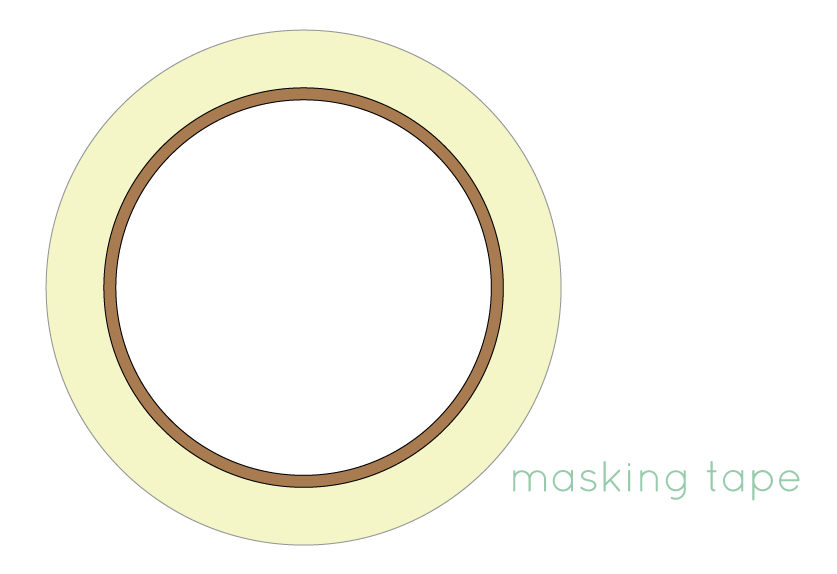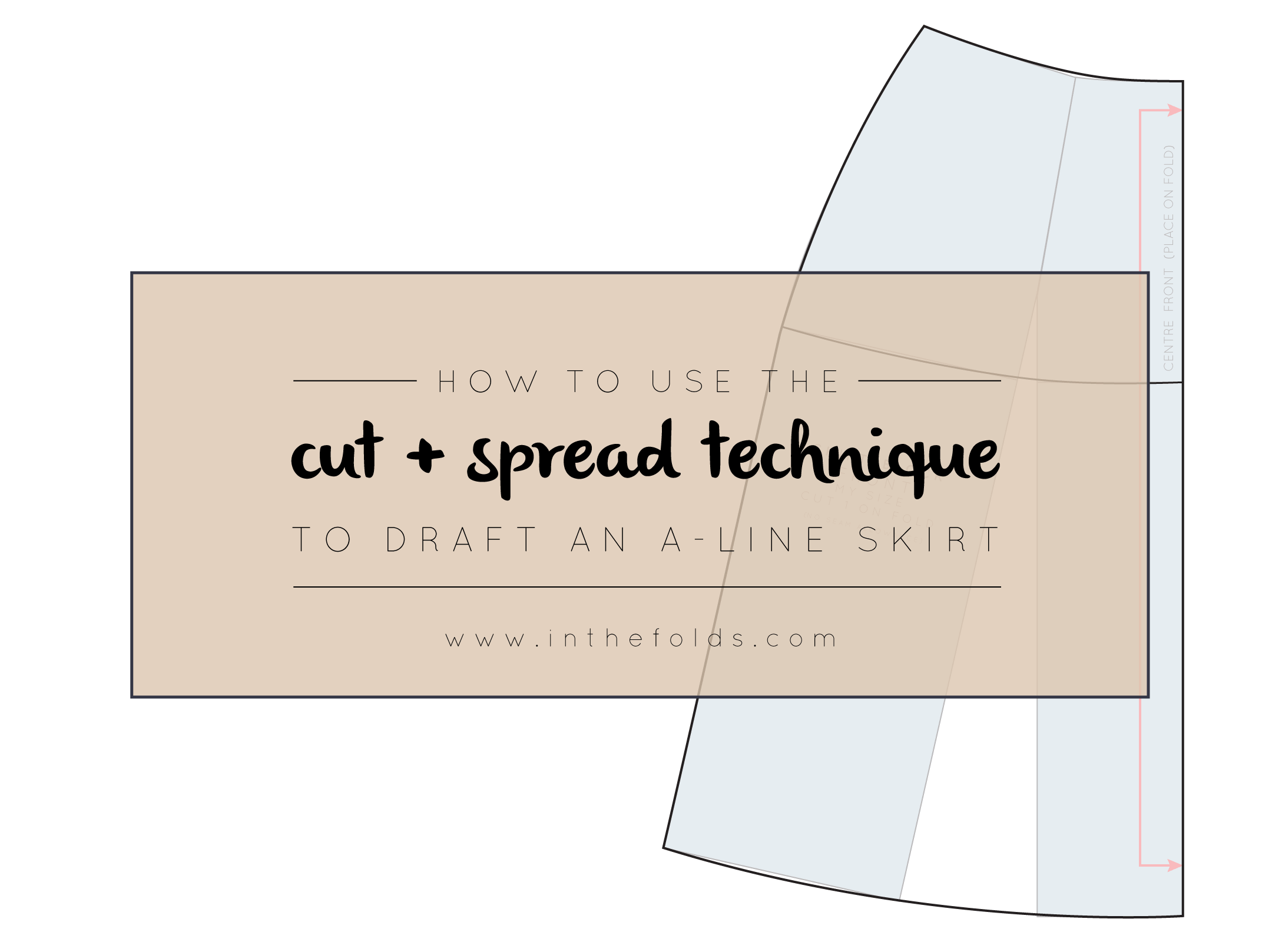Over the past week or two, I've been running through a number of pattern adjustments (such as making a toile or lengthening or shortening the bodice) for the Acton sew-along. Now it's time to get to the juicy ones - the Full Bust Adjustment (FBA) and the Small Bust Adjustment / SBA (coming tomorrow).
When you'll need to do a Full bust adjustment
Most indie pattern companies (including In the Folds) draft for a B cup bust. There are of course exceptions to this rule (such as Cashmerette and Colette Patterns), so make sure you check on your pattern before assuming the bust cup size.
This means that if your bust cub size is smaller than a B you will need to do a Small Bust Adjustment, otherwise known as a SBA (tutorial coming tomorrow), and if your bust cup size is larger than a B you will need to do a Full Bust Adjustment or FBA.
Work out your cup size
Your cup size in sewing patterns may not always correspond to the bra size you wear. To be safe, check your measurements before deciding if you need to make any adjustments to the pattern.
Measure your high bust measurement (the area above your breasts, under your arms) as well as your full bust (the fullest part of your chest) and then take note of each measurement, as well as the difference.
If the difference is 2.5cm (1") your bust is an A cup, 5cm (2") it's a B cup, 7.5cm (3") is a C cup and so on.
Choose your size
Now, go back to your high bust measurement and add 5cm (2"). This is what your bust measurement would be if you were a B cup and therefore the size you should be choosing from the pattern.
For example, let's say your upper bust measures 81cm (32"). Add 5cm (2") to this measurement to find out what size your bust measurement falls into on the In the Folds sizing chart (and what size you would be if you had B cup breasts). 81cm + 5cm = 86cm which corresponds to a size C. Your actual bust measurement is 89cm though - 3cm (1") larger than the cup size of the pattern. This means you need to do a FBA and add this 3cm (1") to your pattern.
As the bodice is cut on the fold, you need to take the measurement you will be adding and divide it by two. For example, this 3cm (almost 1") mentioned in the example, will be split between either side of the front bodice - 1.5cm (1/2") on each side.
Getting started
Trace a copy of the SIDE FRONT BODICE and CENTRE FRONT BODICE. I always suggest to trace a copy of the pattern, so if you make a mistake you always have the original to go back to (although with digital patterns you can always just print another copy if necessary). Be sure to include all pattern markings (in this case: grainline, notches and drill hole) and make sure you trace off the stitching line (the grey line on the pattern) - this is really important. When making pattern alterations, I normally suggest removing the seam allowance, but because the stitch line is marked on the pattern, you can leave it on.
Prepare the bodice for the adjustment
A: On the SIDE FRONT BODICE, draw a straight line from the bottom corner of the pattern, close to the princess panel (1) to the fullest part of the bust curve (2.) The points need to be on the stitch line - not the edge of the pattern.
B: Mark a point (3) approximately two-thirds of the length of the armhole curve (the portion on the SIDE FRONT BODICE), measuring in from the side seam. Join point 2 to point 3 with a straight line.
C: Draw a line from point 2 to the side seam (point 4), about 1cm down from the armhole. This line should be on the cut line of the pattern, not the stitch line.
Transfer guidelines onto centre front bodice
Before getting started on the alteration, you need to transfer the guidelines from the SIDE FRONT BODICE to the CENTRE FRONT BODICE, so that you will be able to make changes to the same areas on each pattern piece.
A: With your pattern pieces side-by-side and correctly aligned (as if they were being sewn together), draw a horizontal line on the CENTRE FRONT BODICE in line with point 2. Label this line with a 5.
B: Draw a second line (Line 6) 3-4cm below Line 5 (parallel). Transfer the position of this line onto the SIDE FRONT BODICE, just until the line intersects the line that runs from point 1 to point 2. For the time being, put the CENTRE FRONT BODICE to the side.
Cut into the bodice
Before cutting into the pattern, place the pattern on top of a piece of pattern paper. This will make it easier when you need to stick the pieces down after you have made the adjustment (it will get really flimsy).
A: Take a pair of scissors and cut into the pattern from the seam allowance below point 1. Cut up to point 2 and then over to point 3.
B: Next, cut in from the armhole towards point 3, being careful to leave a 1-2mm "hinge" intact (it's not a big deal if you accidentally cut through, you can always tape the hinge back together).
C: Next, cut in from the side seam (point 4) to point 2 - again, leaving a small hinge intact at point 2. Your pattern piece should be very malleable by now! All ready to make the adjustment.
Make the adjustment
Gently spread the pattern open from point 1 - using point 3 as a hinge. Continue spreading until you have opened up the bodice by the desired amount. Remember, as the bodice is cut on the fold, you need to take the measurement you want to add to the bust measurement and divide it by two. For example, if I wanted to add 3cm (just over 1") I would add - 1.5cm (1/2") on each side.
Be careful to check that the increase is consistent down through the opening.
You will notice that when you open this part of the pattern a dart is created at the side seam (point 4). We don't need a dart there, but we'll deal with that later on!
A: Cut through line 7
B : Place a ruler on the waist seam of the pattern (on the stitch line) and continue the line beyond the pattern piece. Line up the detached piece with this line.
Remove the dart
Tape or glue the pattern down onto the pattern paper underneath.
Now it's time to get rid of the "dart" that we created in the previous steps. For ease, I will refer to the wedge created in the side seam as a dart, and will refer to the sides of the opening as the upper and lower dart arms.
A: Cut into the pattern through the upper dart arm towards point 2.
B: Now cut towards point 2 from the opposite side of the pattern - leaving a 1-2mm hinge intact.
A: Close the dart by gently pulling the upper dart arm towards the lower dart arm.
B: When the upper dart arm is in line with the lower dart arm, tape or glue in place. You will see that a small wedge has opened up on the bust curve (the fullness from the side seam has been relocated to the bust seam).
Reduce waist back to original length
A: At this stage you will notice that by adding fullness to the bust, we also added fullness to the waist seam (the opening at point 1). In the case of a FBA, you are wanting to increase the bust measurement, without adding any extra to the waist - so this will need to be removed.
B: Remove the excess length from the waist at the side seam. Measure how much was added at point 1 and then remove this from the waistline at the side seam. Redraw the side seam with a straight line up to the pattern's original armhole.
Make alterations to the centre front panel
It's now time to transfer the changes we have made to the SIDE FRONT BODICE to the CENTRE FRONT BODICE (so that they can be sewn together).
Take another piece of pattern paper and draw a straight line down the right hand side. Label "Centre Front." Take the top section of the CENTRE FRONT BODICE and tape or glue in place, lining up the centre front of the pattern piece with the line marked on the paper.
A: On the SIDE FRONT BODICE, measure the length of the smaller opening. Take note of the measurement.
B: Now, move to the CENTRE FRONT BODICE and place the middle section of the pattern, the same distance down (as the measurement noted) from the upper section of the pattern. Tape or glue in place.
A: On the SIDE FRONT BODICE, measure the length of the larger opening. Take note of the measurement.
B: Now, move to the CENTRE FRONT BODICE and place the lower section of the pattern, the same distance down (as the measurement noted) from the middle section of the pattern. Tape or glue in place.
Trace the new pattern pieces
Your alterations are done! Now you just need to trace new versions of each piece.
A: Take a fresh piece of pattern paper and trace the SIDE BACK BODICE, starting at the stitch line. Be careful to check that you trace the new side seam and not the original side seam.
B: Add seam allowance to the piece - 1.5cm to the side seam, 1.2cm to the bust seam and waist seam and 1cm to the armhole seam (use this tutorial if you need some tips). If you are wondering why the seams meet at different angles - you can learn more about seam returns here. Transfer the notches.
C: Label the pattern and add the grainline (you can work this out by placing the new piece on the original pattern piece and transferring the grainline).
Repeat process for the CENTRE FRONT BODICE.
And that's it! Your bodice is bosom ready!
Keep your eye on the blog for more Acton sew-along posts coming in the next couple of weeks.






















